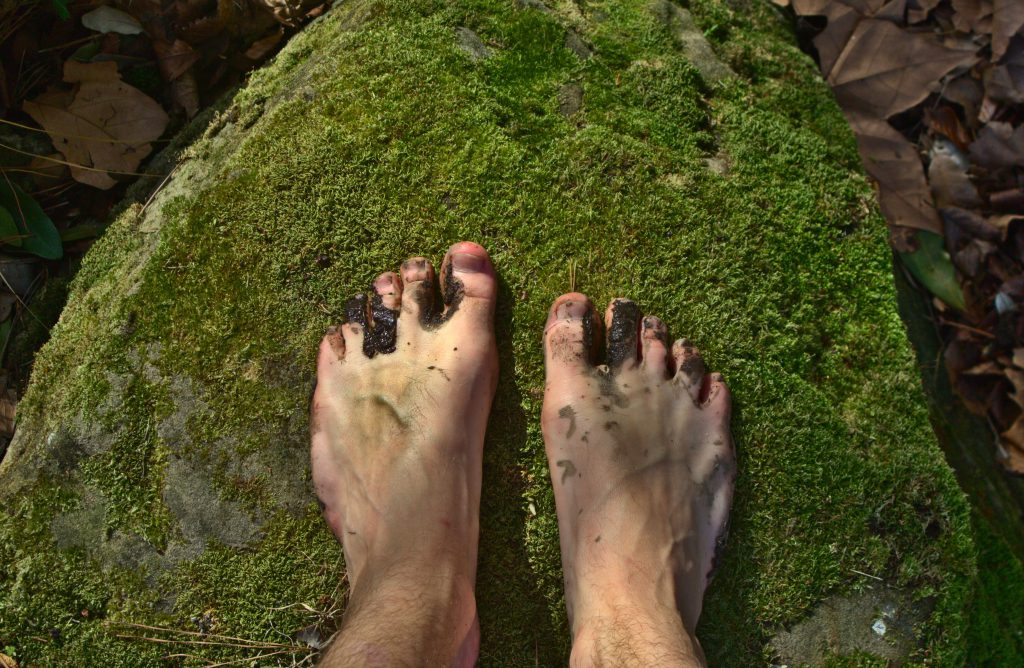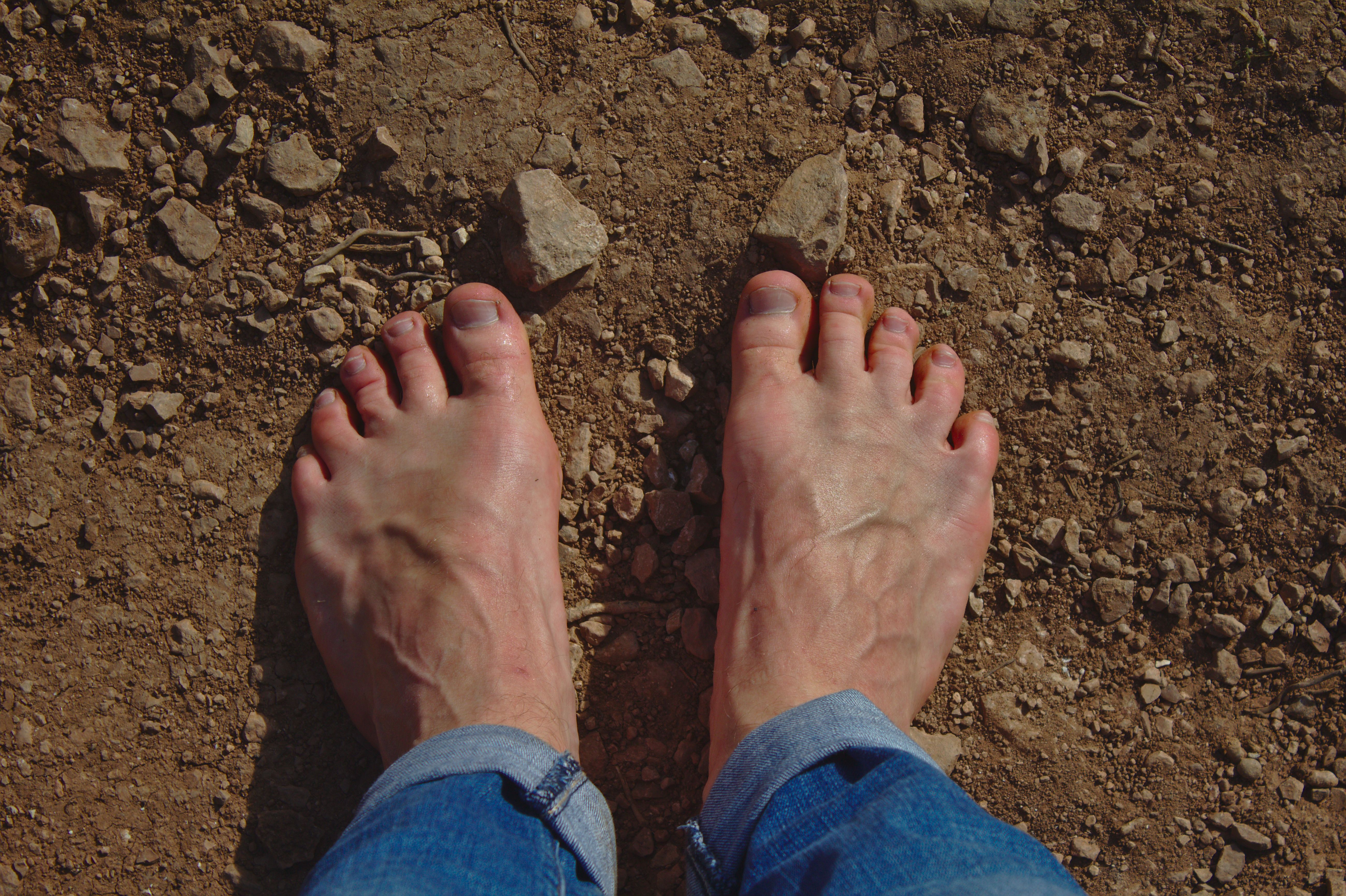The sensation of barefoot walking
Feeling the sand underneath your feet during a nice walk at the beach is an incredible sensation. You might also recall playing barefoot on the lawn as a child in your garden or in a park for hours and hours. Those are good memories, are they not? But, when was the last time you left your home without shoes? Have you ever been to a forest and felt the needles of the trees slightly poking the soles of your feet? Or a bit more adventurous, tried walking over a layer of snow without the protection of your nice and cozy winter shoes?
To be honest, four years ago, I would have not considered doing all of this myself. But then I (re-)discovered barefoot walking. Like a child, I tried walking on a vast range of different surfaces as I was overwhelmed by the number of new sensations. It turns out that we have an incredibly high concentration of nerve endings at the soles of our feet. With these nerves, our feet feel the ground which helps us keep our balance. Nowadays, I even sometimes like to go over gravelly roads, which initially was very painful, but can be more of a massage now.
Do you know the feeling of freedom when you are finally able to get out of your shoes after a long day? For me, it is always a release when I put off my shoes! On the contrast to that, when coming home from a barefoot walk I only feel a tingling and relaxing warmth at the soles of my feet reminding me of all the different surfaces I crossed that day.
But is barefoot walking not dangerous?
“Are your feet not cold?”, “Doesn’t it hurt?”, “But what about glass shards?”. These are some questions that people ask me frequently. The answer to the first two is quite simple, it is just a matter of accustoming your feet. Our body is far more durable than we often believe it to be. However, glass shards are definitely dangerous. But how often do you step on them with your shoes? I happen to encounter them less frequently as you might believe, and usually, nothing happens. One is naturally more conscious when not wearing shoes.
An aspect which I find much more surprising is the social stigma that comes with the barefoot lifestyle. When walking down the street you pretty frequently encounter people pointing at you. Wearing shoes is so integral in our society that taking them off comes across as quite unconventional these days.
An actual danger, I would like to point out though, is that when you start barefoot walking your body still has to accustom itself to the new challenge. So I would recommend to take it slow in the beginning in order to avoid injuries from overstressing your body.

A little science of barefoot walking and running
We, humans, evolved to move in an upright position over the course of millions of years, as especially our ancestors were skilled hunters and gatherers. Thus, it seems only logical that over all of this time our bodies adapted perfectly to walking and running. On the opposite of that stands a relatively young invention: the shoe. Even more recent is the belief that we need highly cushioned shoes for running. Because we put these sarcophaguses around our feet starting from a young age, we do not develop the strong muscles in our feet and legs required for barefoot walking.
We even develop a different way of walking where we land with our heels first. This puts a high strain on our joints, muscles and tendons possibly resulting in injuries like for example knee or hip problems and foot degenerations like hammer toes. Seasoned barefoot runners or walkers touch the ground with their fore or middle foot first instead of their heels. Although this puts higher stress on the muscles of the legs, the body as a whole is positioned advantageously so that the feet can act as natural springs. This enables the body to move much more energy efficient while also protecting the joints from the impact of touching the ground.
Reconciling the view on shoes
This post is not supposed to be a passionate plea against shoes. It is much rather intended as a spark of thought to reevaluate a behavior that many of us probably never questioned before. For a long time, it never crossed my mind that going barefoot is a valid alternative for the struggle to find shoes fitting my short but broad “hobbit” feet.
But, shoes have many positive sides as well. Simply the fashion statement you can make by wearing different kind of shoes (or none) can be something special to many people. Furthermore, the greatest achievements of humankind like climbing Mount Everest or space travel would have been literally impossible without shoes. Usain Bolt running the 100m in world record time without his track spikes is unthinkable. Still, I am pretty sure that he includes barefoot running in his training.
My personal answer to this question are minimal shoes, which only provide a small amount of cushioning while also leaving enough space for the toes. This allows me to walk through daily life combining the benefits of shoes like safety during a bike ride with the benefits of barefoot walking. But for dancing, I still prefer wearing normal shoes.
Nowadays I challenge myself to walk barefoot as much as possible because I just enjoy it. Just go out there and try it! Maybe start with a nice walk on the beach, and you might find that you like it more and more! I recommend you to give your feet some love! Massage your own feet, or even better, offer a massage to someone else!
Further information:
https://en.wikipedia.org/wiki/Barefoot_running
Lieberman, Daniel E., et al. “Foot strike patterns and collision forces in habitually barefoot versus shod runners.” Nature 463.7280 (2010): 531.
Book: Barefoot Running Step by Step – Barefoot Ken Bob Saxton
Running Analysis Video of Ken Bob Saxton by David Lieberman: https://www.youtube.com/watch?v=zIL07uYAW-Q
Ted Talk of Christopher McDougall author of the book Born to Run: https://www.youtube.com/watch?v=b-iGZPtWXzE
Promotional Video of minimalist shoe company Vivo Barefoot “Shoespiracy”: https://www.youtube.com/watch?v=x_rDFa6kZfI

